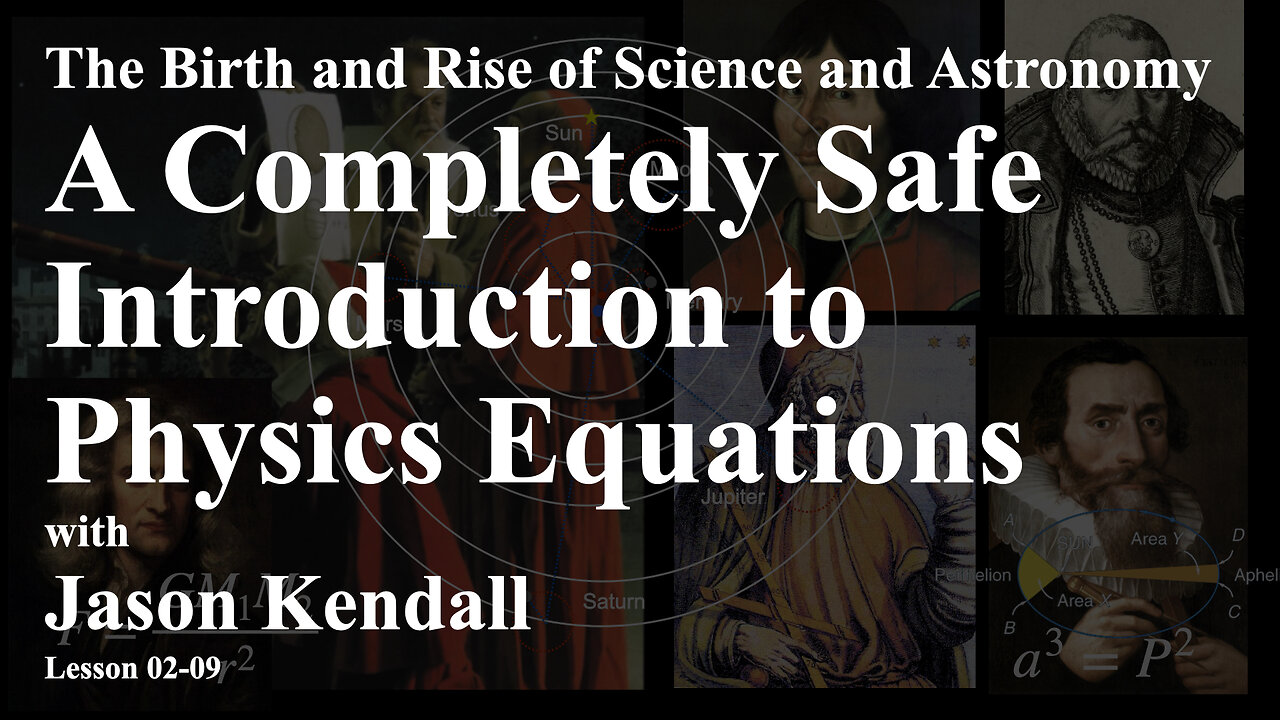Premium Only Content

Unlocking the Secrets of Motion: Newton’s Laws Explained!
In the study of physics, particularly in the realm of classical mechanics, one encounters fundamental principles that govern the behavior of objects in motion. Among these principles, Newton’s laws of motion stand as a cornerstone of our understanding. This discourse seeks to elucidate the implications of Newton’s second law, expressed in the succinct form F = ma, where F represents force, m denotes mass, and a indicates acceleration.
Equations in physics serve as shorthand representations of complex relationships, often encapsulating extensive concepts within concise symbols. The equation F = ma succinctly conveys that the force acting upon an object is proportional to the mass of the object and the acceleration it experiences. To unpack this, we must first define the components involved. The mass (m) of an object is a measure of the amount of matter it contains, while acceleration (a) is defined as the rate of change of velocity over time. Thus, acceleration can be conceptualized as the change in speed (velocity) over the change in time, mathematically expressed as a = (v_f - v_i) / (t_f - t_i), where v_f and v_i are the final and initial velocities, respectively, and t_f and t_i are the corresponding final and initial times.
Understanding acceleration necessitates a comprehension of speed, which is the distance traveled per unit of time. Speed is quantified in units such as meters per second (m/s) or kilometers per hour (km/h). Furthermore, acceleration is derived from speed; hence, it is expressed in units of meters per second squared (m/s²), indicating the change in speed over time. In practical terms, if an object increases its speed from a lower value to a higher value, the acceleration can be represented mathematically by the difference in speeds divided by the difference in time taken.
To illustrate this, consider an object accelerating from an initial speed, v_i, to a final speed, v_f, over a time interval, Δt. The equation governing this phenomenon can be expressed as a = (v_f - v_i) / Δt. If the initial speed is lesser than the final speed, the object is said to be experiencing positive acceleration; conversely, if the final speed is less than the initial speed, the object is decelerating.
It is essential to address the units of measurement employed in physics, as they serve as a foundation for clear communication of quantitative information. The International System of Units (SI) provides a standardized framework for measurement, where the meter (m) is the unit of distance, the second (s) is the unit of time, and the kilogram (kg) is the unit of mass. Consequently, speed is articulated in meters per second (m/s), while acceleration adopts the unit of meters per second squared (m/s²).
The relationship encapsulated in F = ma further necessitates an understanding of the concept of force. The unit of force, known as the Newton (N), is defined as the force required to accelerate a one-kilogram mass by one meter per second squared (1 N = 1 kg·m/s²). This unit embodies the principle that force is a product of mass and the acceleration imparted to that mass, forming a direct correlation between these fundamental quantities.
Additionally, energy is intrinsically linked to the concepts of force and motion. When a force is applied to an object causing it to move through a distance, work is performed, and energy is transferred. Work (W) is quantitatively expressed as the product of the force applied (F) and the distance moved (d) in the direction of the force, mathematically represented as W = F·d.
Energy can manifest in various forms, with kinetic energy (KE) being particularly pertinent in the context of motion. Kinetic energy is defined as the energy an object possesses due to its motion, expressed as KE = (1/2)mv², where m is the mass of the object and v is its velocity. This equation underscores the interrelationship between mass, speed, and energy, illustrating that an increase in either mass or speed results in an increase in kinetic energy.
In summary, the exploration of fundamental concepts such as force, mass, acceleration, and energy reveals a web of interrelated relationships that govern motion in the physical world. Newton’s second law provides a framework for understanding how forces interact with masses to produce accelerations, and the implications of these interactions extend into the realm of energy and work. This formal approach to physics emphasizes the necessity of precise measurement and clear definitions, fostering a deeper understanding of the underlying principles that shape our universe.
-
 LIVE
LIVE
LFA TV
20 hours agoRUMBLE RUNDOWN WEEK 5 with JEREMY HERRELL AND SHAWN FARASH 11.8.25 9AM
13,063 watching -
 2:16:26
2:16:26
Megyn Kelly
19 hours agoBen Shapiro Responds to Tucker Carlson, Plus Sydney Sweeney and Newsom, with Knowles and Klavan
23.1K79 -
 56:11
56:11
X22 Report
1 hour agoMr & Mrs X - Women Are Fighting Back Against Men In Women's Spaces, It Has Begun - EP 15
5.89K2 -
 20:46
20:46
Jasmin Laine
1 day agoJoe Rogan Drops NUKE—Carney’s Secret Deal + 100,000 Kamloops Homes at Risk
1.93K15 -
 4:00
4:00
Mrgunsngear
1 day ago $14.62 earnedFirst They Came For Glock, Now They're Coming For The Ruger RXM
7.54K16 -
 1:42:46
1:42:46
Lara Logan
1 day agoINJECTING TRUTH INTO THE VACCINE DEBATE with Del Bigtree | Ep 43 | Going Rogue with Lara Logan
6.79K31 -
 12:55
12:55
Cash Jordan
19 hours agoNYC Busses 'MOBBED' by Millionaires... as "Communist" Mayor VOWS to END AMERICA
38218 -
 LIVE
LIVE
Major League Fishing
1 day agoLIVE! MLF Toyota Series Championship!
651 watching -
 18:54
18:54
Bearing
1 day agoNew York COMMUNIST TAKEOVER 🚨 Zoran Mamdani’s Revolution 💥
3.12K66 -
 1:05:26
1:05:26
Man in America
1 day ago“Poseidon” Doomsday Sub, Microplastics & The War on Testosterone w/ Kim Bright
40.2K55